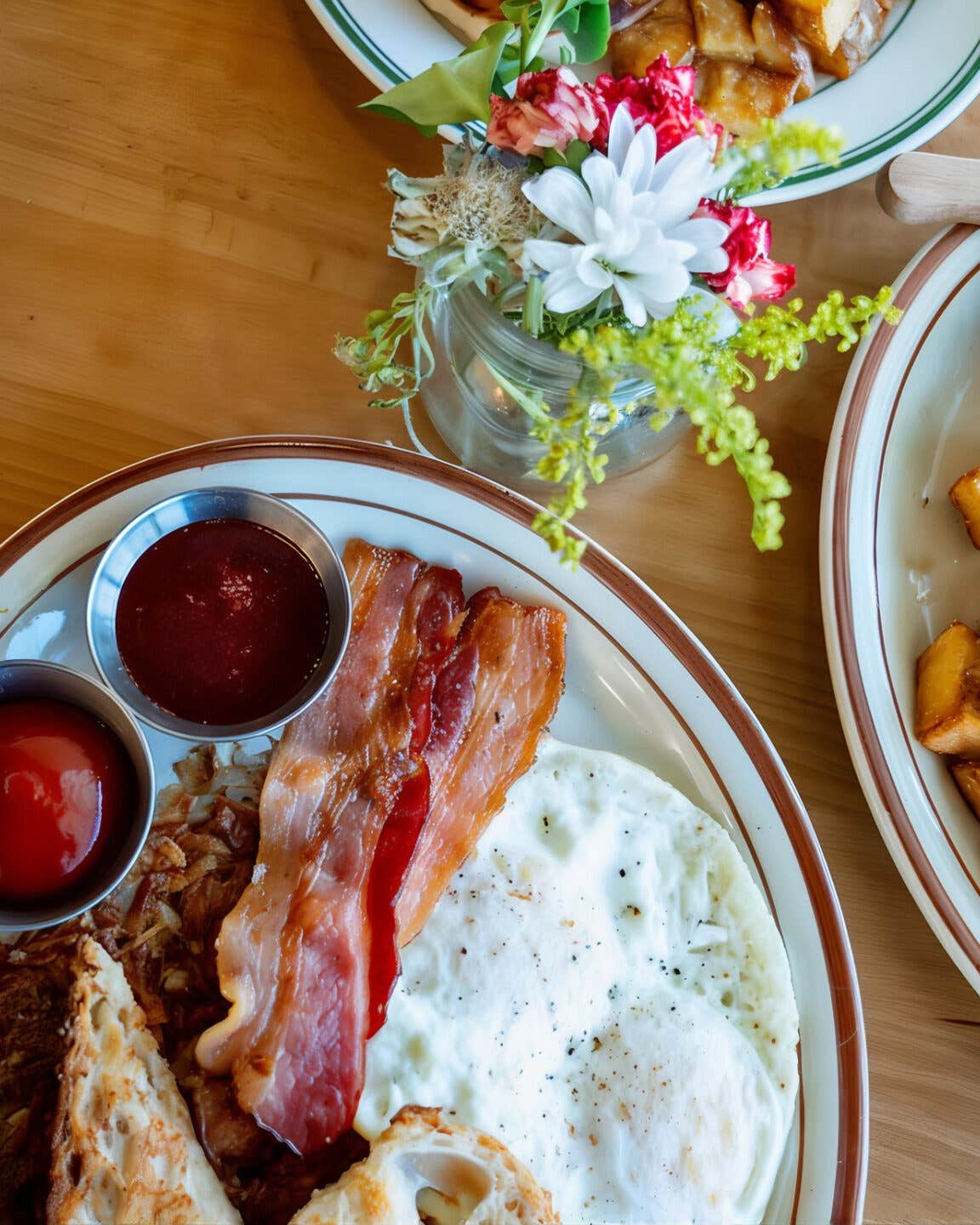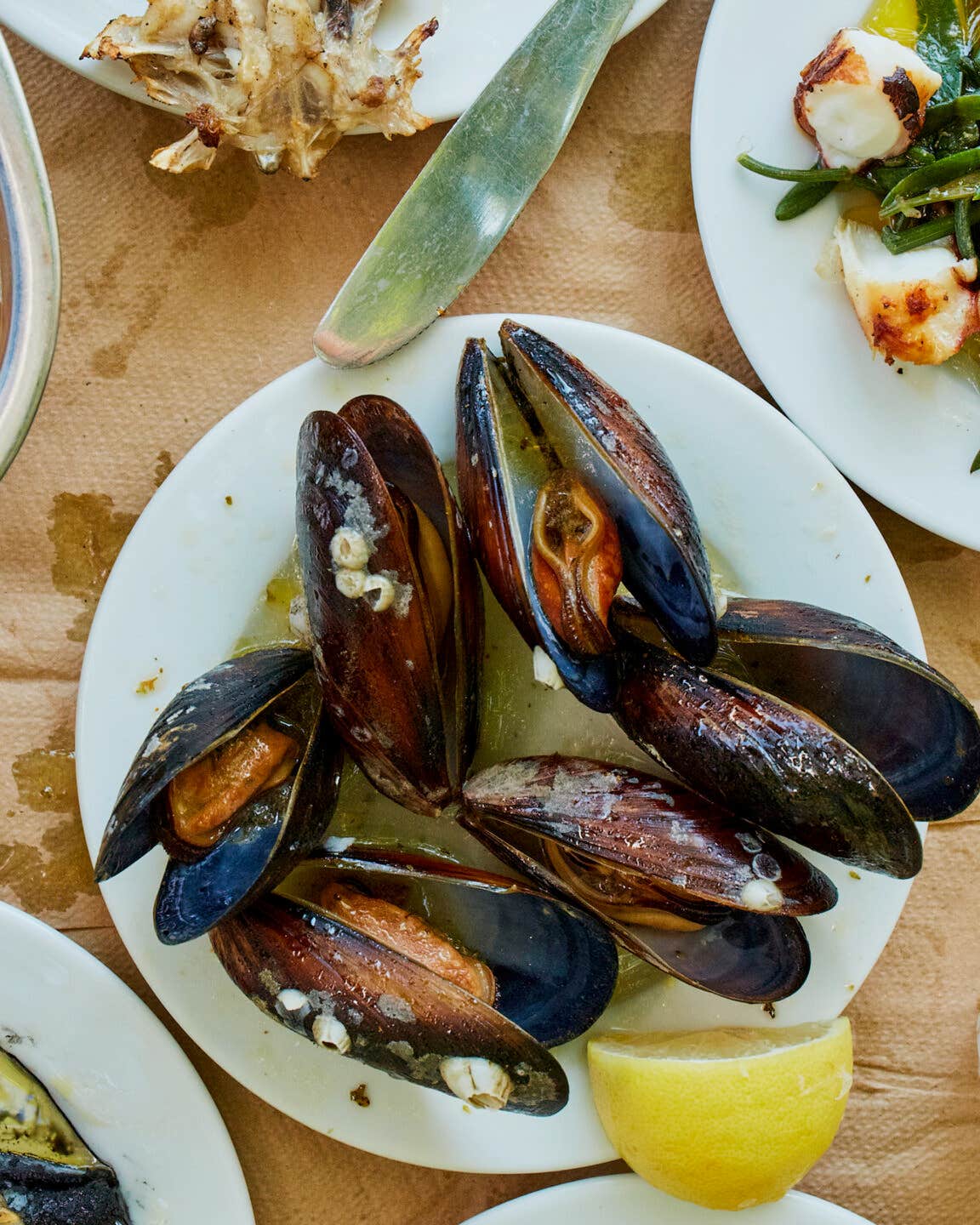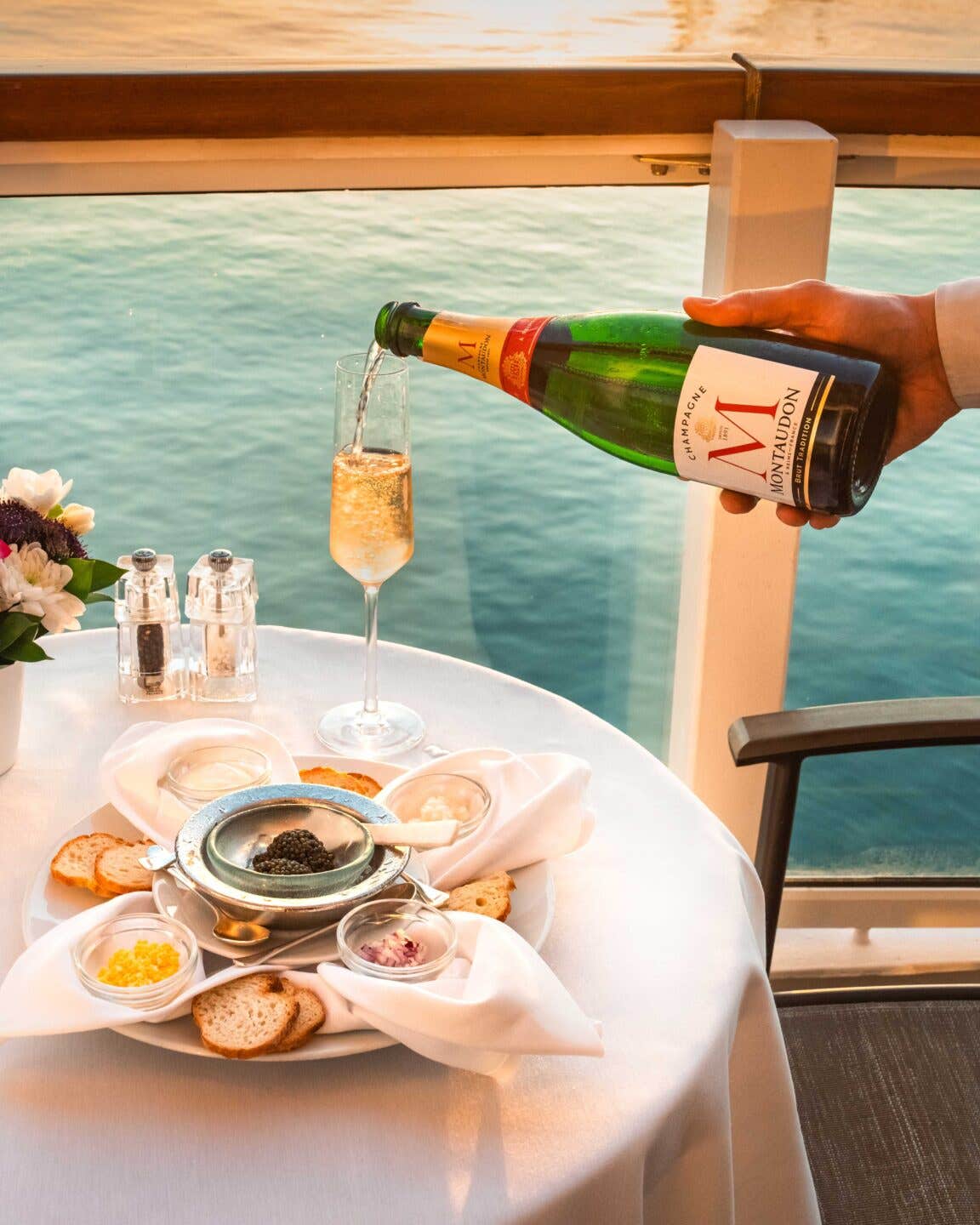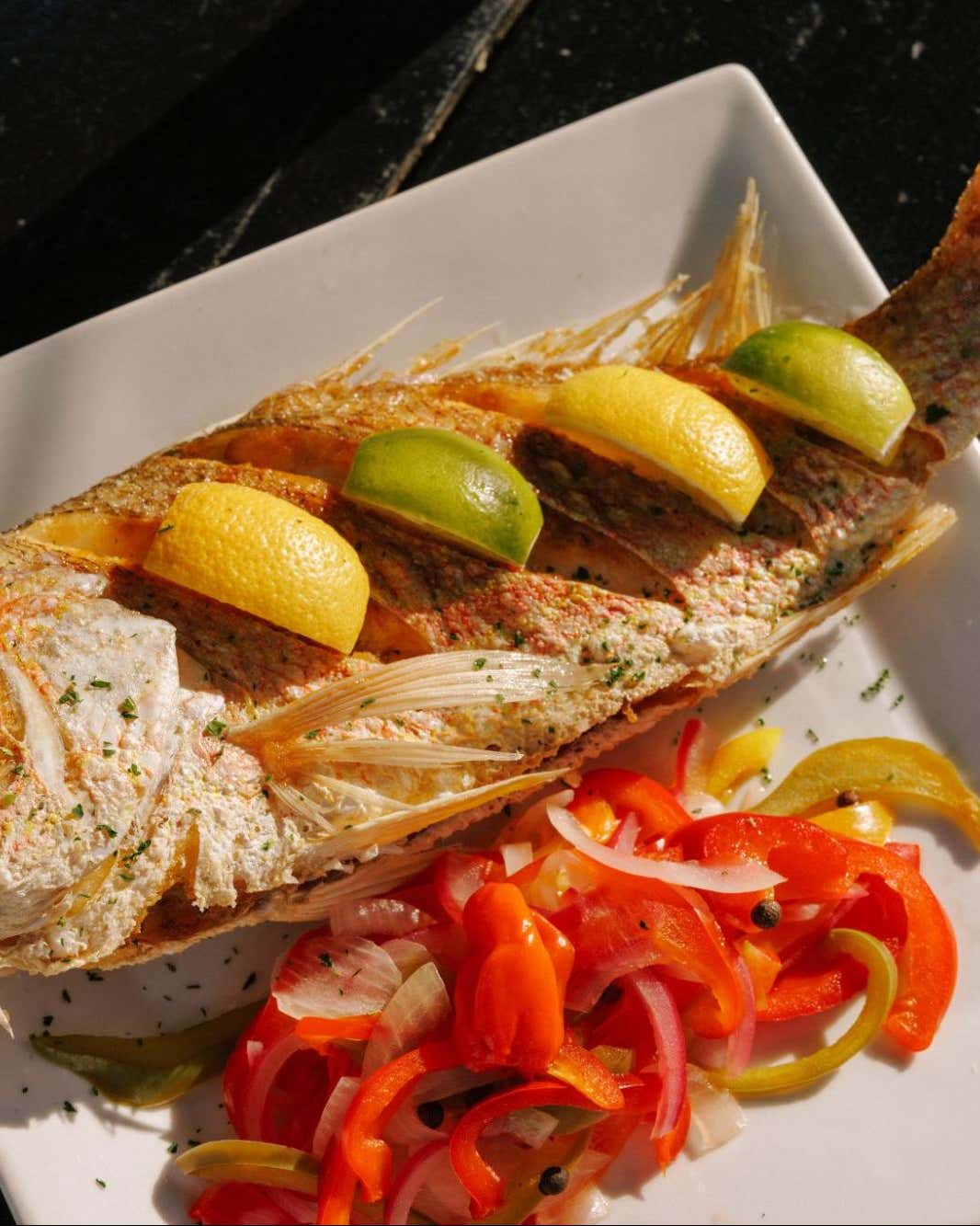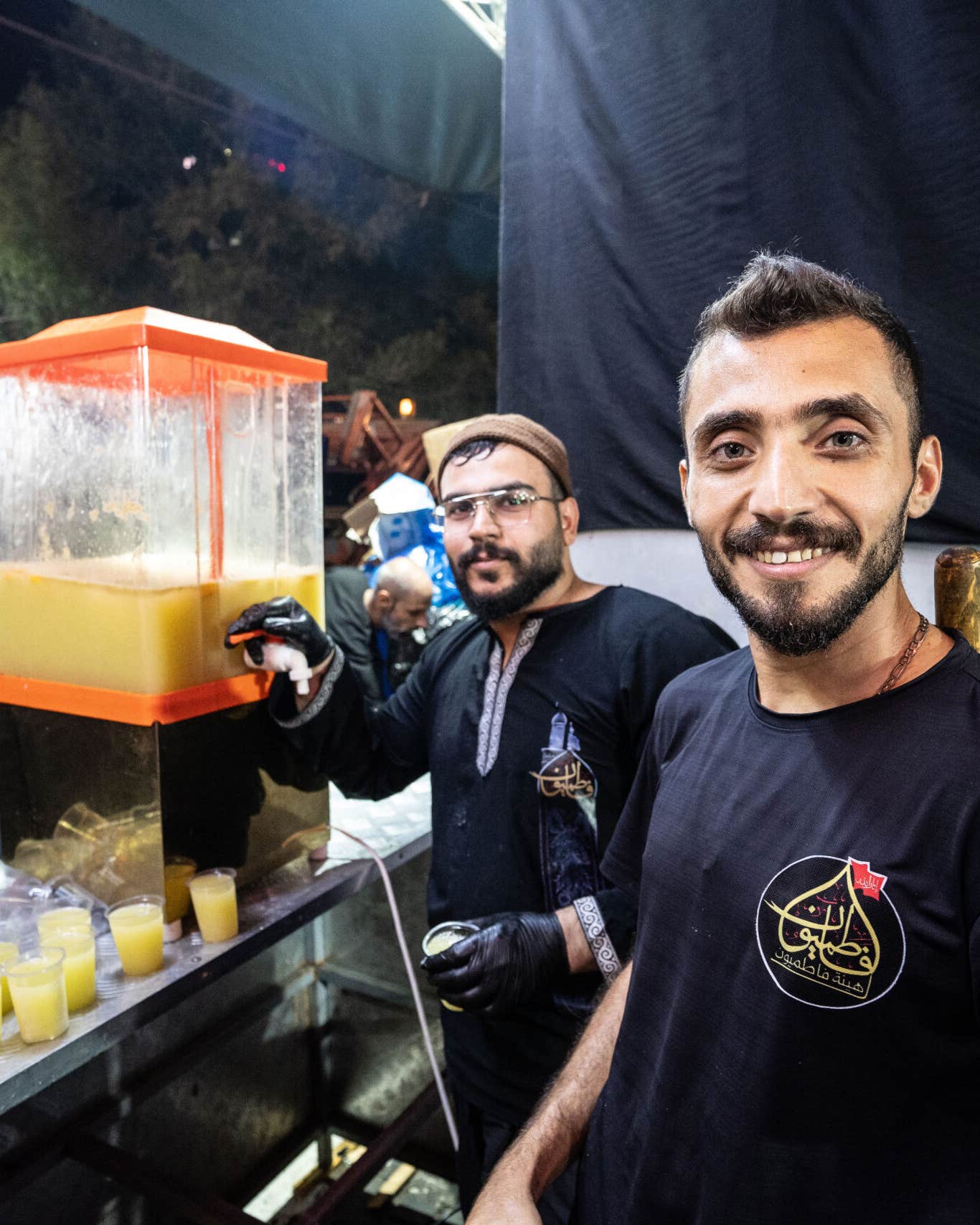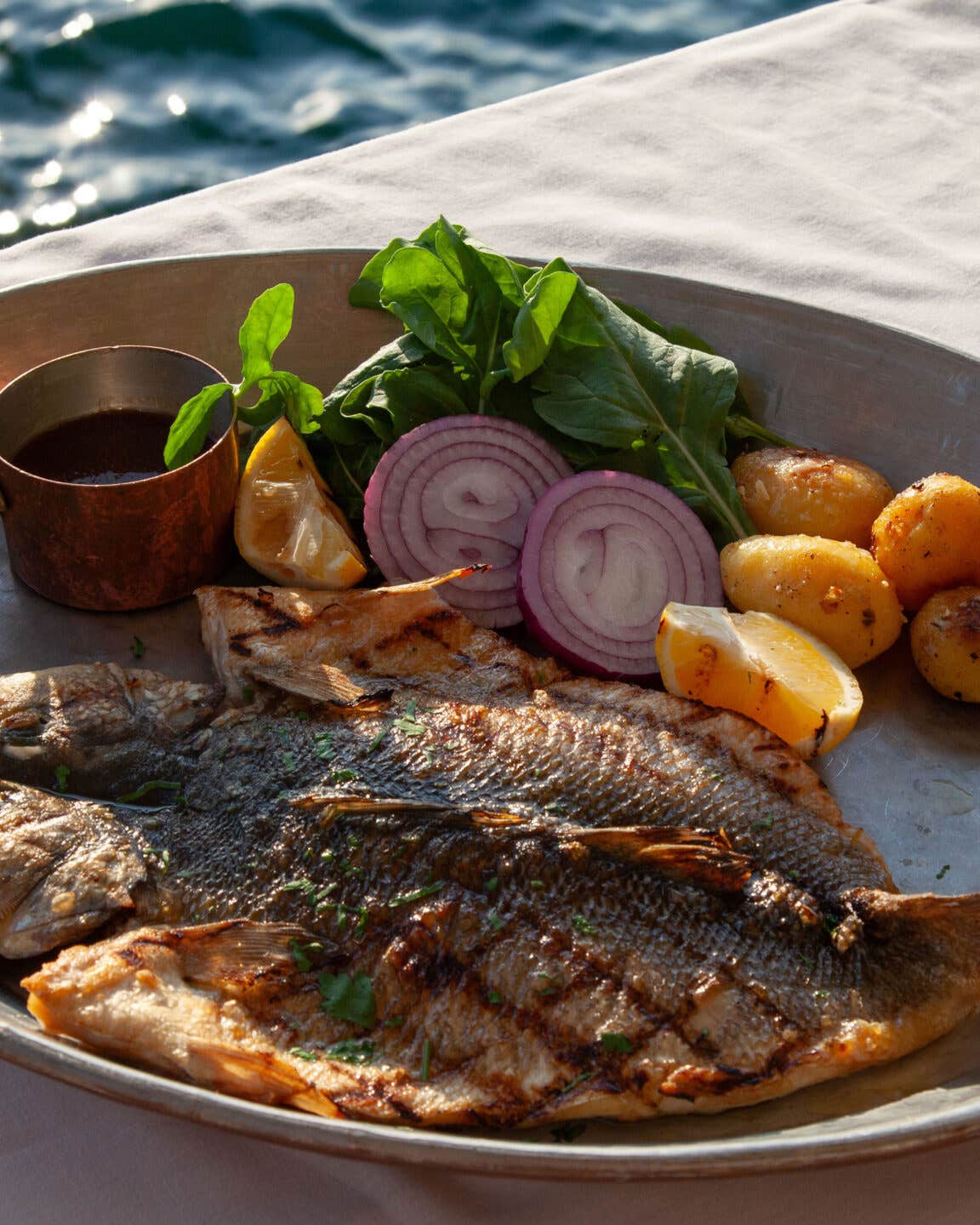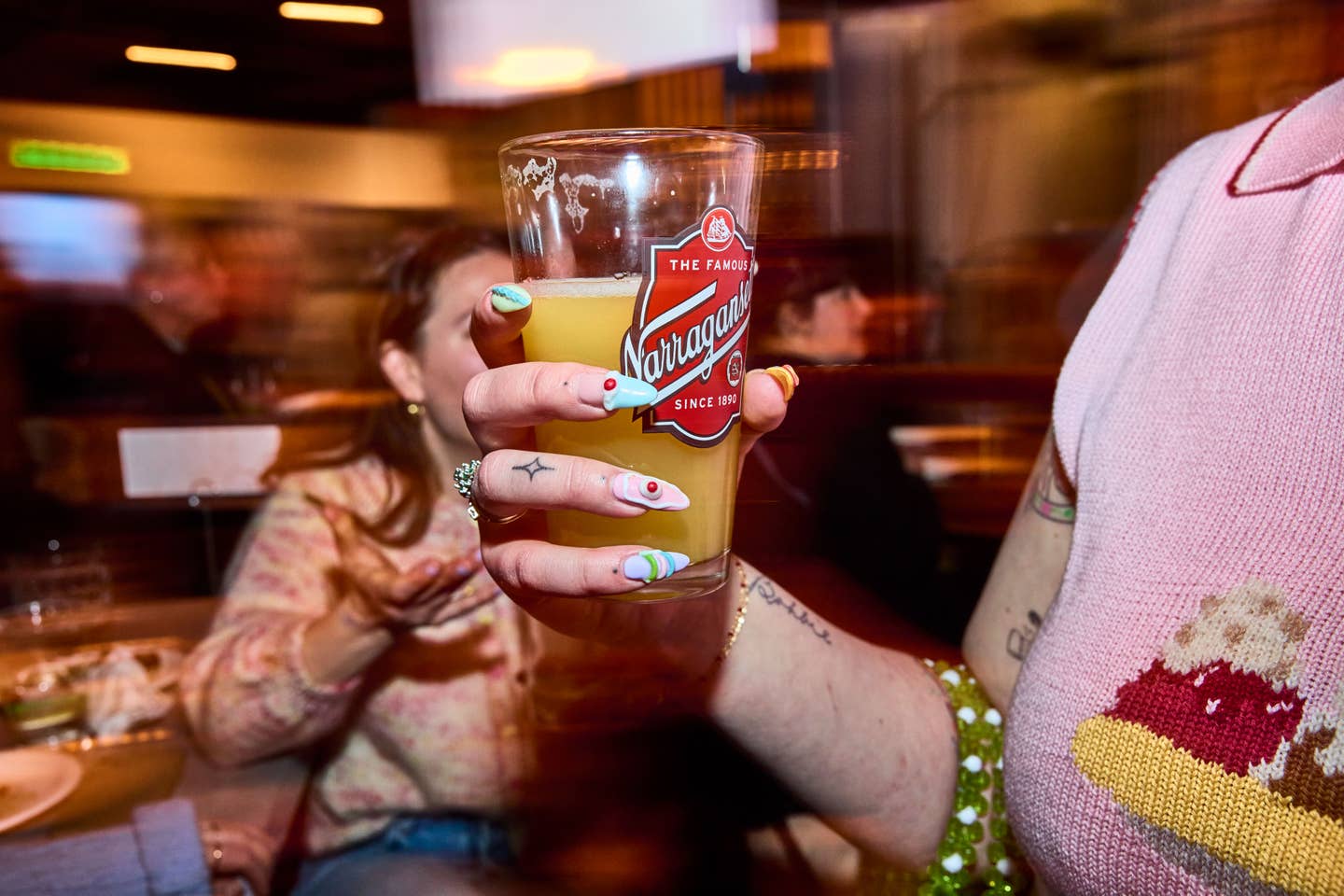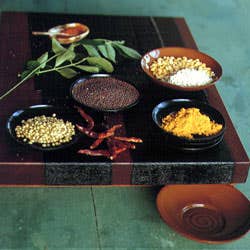
The Spice and Color of Madras
Westerners who visit Madras, the capital city of the state of Tamil Nadu on India's southern tip, expecting its cuisine to be a living endorsement of "Madras curry powder" are in for a surprise. Curry powders are indeed manufactured here, mixed in huge, rumbling machines that look and sound like cement mixers—but they are, luckily for us, strictly for export. Not an ounce is meant for home consumption.
The superb foods of South India are little known in the Western world; likewise its true seasonings, which are quite different from those used in northern India. The highly aromatic mixture of roasted coriander seeds, roasted red chiles, and roasted fenugreek; the startling use of urad dal (split peas) as a spice, and its combination with fresh curry leaves and mustard seeds to perk up the simplest of vegetables; the use of fennel seeds in the cooking of meats; the use of fresh coconut to give body and a slight sweetness to sauces; and the use of yogurt, almost as a dressing, for steamed vegetable and rice salads—all these are very, very southern. So are crisp pancakes (dosas), sometimes as large as two feet in diameter, rolled up like precious parchment; fluffy idlis, steamed rice cakes whose delicacy has been compared to that of jasmine flowers and whose name can be expressed in the elegant hand gestures of classical South Indian dance; spicy semolina "polenta" dotted with cut vegetables; young shark's meat that is shredded, sauteed with ginger, shallots, and green chiles, and offered to nursing mothers as a pick-me-up; soupy rasams made with crab; lamb cooked with fennel seeds and coconut; chicken sauteed with poppy seeds and peppercorns; split peas cooked with caramelized shallots.
The Western nutritionists who suggest to us that grains and pulses form the major part of our meals should come here to see how it is done. They should perhaps, for instance, visit the family of Mrs. A. Santha Ramanujam in Madras. Shoes are left at the door of their simple first-floor flat. The Ramanujams are vegetarians, a traditional Ayengar family of the upper Brahmin caste, worshipers of Lord Vishnu. Their mornings invariably begin with ablutions and prayers. Sacred designs are drawn on the floor with rice flour. "If she is very good and has done all her homework, I let her make the designs," a daughter-in-law says of her child. Tradition is passed on from mother to daughter with gentle enticements. The designs are made not only because they are sacred but because they will provide food for ants and squirrels.
The women of the house arise at dawn to prepare both breakfast and lunch. The cooking begins at 6 a.m., when the day is still cool, and is finished by 7:30. The first thing they do is roast the coffee beans. The family likes peaberry beans, which sit in a jar, grayish green and rather sad. These are thrown into a heated, cast-iron wok and roasted slowly. As they are tossed—the process takes 20 minutes—the beans begin to come to life, and the come-and-get-it aroma of coffee starts spreading through the house. As soon as the beans turn brown, a tiny amount of sugar is thrown into the wok. This caramelizes around them, adding both flavor and color. The beans are removed, ground, and put through a filter. The coffee is strong—but it is drunk with at least an equal amount of hot milk and some sugar.
Some sons of the Ramanujam household drink quick cups of coffee and dash off to their offices on motorcycles and scooters. One son opts for a glass of "buttermilk"—actually thinned-out yogurt, flavored with crushed ginger, green chiles, cilantro, curry leaves, powdered fenugreek, asafetida, and, for good measure, a few rose petals—a heavenly concoction.
Then the women in their cool saris and the children, all ribboned and ready for school, sit down to the serious business of a substantial breakfast. The ceiling fan is turned on in the dining room. Birds chirp loudly in the shady trees outside. The choices for breakfast are varied: The family could have idi appam, a total delight that is virtually unknown in the West (or for that matter in northern India). First you make fresh rice noodles. With the right tools, it is a breeze. Rice has already been washed and dried at home and then sent off to the mill to be ground. This special flour is mixed with boiling water to make a dough with the texture of Play-Doh. Balls of it are put into a wooden press, which is held over an oiled saucer. As you press, thin noodles ooze out. If you move the press in a circular motion, you get a small nest of noodles. Several saucers are filled this way. All are stacked in a steamer and steamed for five to seven minutes. "Each plate is only one calorie," the youngest Ramanujam daughter-in-law says brightly. You add to the calories somewhat by eating these noodles with freshly squeezed cardamom-flavored coconut milk or with ghee—clarified butter—and perked up with mustard seeds, urad dal, curry leaves, and dried red chiles.
The noodles are only one choice. The family could also have rava khichri, a spicy semolina "polenta" chock-full of fresh vegetables, or one of the two preparations for which the region is famous—idlis and dosas.
The biggest meal of the day in the Ramanujam household, though, isn't breakfast but lunch. All the sons come home for it. This is a rice meal. Every course is eaten with "boiled" (converted) rice, which is cooked just a bit softer than rice is in the north. The grains are white, short, fat, and plump. A young daughter-in-law with jasmine in her hair explains: "We like to mash the other foods into the rice."
But first of all, a sweet is placed on the plate. This could be a square of slightly crisp chickpea-flour fudge, or halva made with semolina. Then comes plain rice and vegetables—for instance, cabbage and carrots stir-fried with mustard seeds and curry leaves, mixed vegetables dressed with ground coconut and green chile sauce, or some preparation of eggplant, okra, zucchini, green plantains—whatever is in season. Next there is sambar, a split-pea stew. More rice is put on the plate, this to be eaten with very thin split-pea broth to which a variety of flavorings may be added—black pepper (turning it into the health-giving "pepper-water" or milagu tanni, which Anglo-Indians translated into their mulligatawny soup), tomatoes, even garlic—which is supposed to be the perfect remedy for those who have overindulged.
The final course at lunch, considered the cleansing one, is yogurt, rice, and pickles, all mixed together. (Whenever I see Tamils doing this, I think of the Japanese, who like to end meals with rice, pickles, and tea.) Sometimes the yogurt and rice are combined in a salad (bhakala bhat) with bits of green mango, cucumber, ginger, and green chiles, and sometimes even grapes are added.
Dinner, like breakfast, is light. "We generally do not eat rice for dinner," Mrs. Ramanujam explains. Instead, easily digestible fermented foods, like idlis and dosas, are preferred. With the batter already made and sitting in a bowl, they take just a few minutes to prepare.
Not everyone in Tamil Nadu is vegetarian. Just look at the Chettiar family of the formerly royal state of Chettinad, who eat, with great enjoyment, some of the most exquisite meat, chicken, and fish dishes in the region. It is worth visiting one of their major residences in Madras.
In the choicest of locations, just where the Adyar River meets the Bay of Bengal, is a large palace. Its acres of grounds serve as a bird sanctuary. It once belonged to Rajah Sir Annamalai Chettiar, and his descendants live there now, attended by 127 servants.
The spacious rooms all have Italian marble floors. The high ceilings and doors are carved from solid teak acquired in Burma, along with vast fortunes, when the Chettiar men went to work there in the last several centuries. (The women always stayed behind in India.) Members of the family are not allowed to forget what they were born to do. The Chettiar motto, "Strive, save, and serve," is emblazoned everywhere.
What they mainly strive to do is make money. The Chettiars, a trading community, were always moneylenders and bankers. Today they are major industrialists as well. They are canny not only at making money but at keeping it in the family. Marriage takes place between first cousins, ensuring that the bride's dowry of diamonds, rubies, and sapphires, of rich silk saris, of rooms filled with silver utensils and cut glass and carpets never travels too far from home.
Surrounded by photographs of racehorses and garlanded portraits of sober-faced forebears, Rajah Sir Annamalai Chettiar's descendants enjoy meals served, by discreet family retainers, on silver thalis as solid as their owners' bank accounts. The food combines traditional local vegetarian specialties with such dishes as chicken-pepper fry (chicken cooked with lots of black pepper and red chiles), egg kurma (hard-boiled eggs in a gorgeous coconut chile sauce), and eraichi kolumbu (lamb in a fennel-flavored coconut sauce). Each dish is prepared with great skill and care. One thing is sure about the Chettiars: They love to eat.
Even though the Chettiars can buy every kitchen gadget ever made, they insist that their cooks grind all the spices on stone and cook over wood fires. "Food tastes better this way," a family member explains.
They also have the means to buy (or grow) the finest possible ingredients, and this they do. The Meen Varuval—spicy pan-fried fish steak—prepared in the Chettiar kitchen is almost certain to be made with kingfish that was just caught in the Bay of Bengal that morning, and with coriander seeds that were grown on the home farm. The barefoot cook, his white veshti (sarong), doubled up for convenience so that it comes only to his knees, first cuts the whole fish on a slight diagonal to get long steaks. "I will start at the tail and stop when I reach the edge of the cleaned stomach," he says. He wants only those steaks that are perfect ovals. Several fish are needed to get the requisite number of steaks. The fish are then dipped in a paste of ground coriander, cayenne, turmeric, cumin, salt, and fresh lime juice, left to marinate for awhile, and then quickly pan-fried in a heavy skillet lightly brushed with oil. They are cooked on a wood fire, of course.
British buildings—such as the 1842-vintage Ice House that once stored the ice that came all the way from Boston to cool British drinks and help make English puddings—still dominate the Madras waterfront. Educated Tamils are versed in English literature and in the Western sciences. But their food remains completely South Indian. I remember one young man waxing rhapsodic about sundal—spicy salad made with boiled peanuts, tomatoes, shallots, and cayenne. He added, with some passion, "What can be better on a rainy day than settling down comfortably with a hot cup of homemade coffee, some sundal, and a book by P. G. Wodehouse!"
Keep Reading
Continue to Next Story

